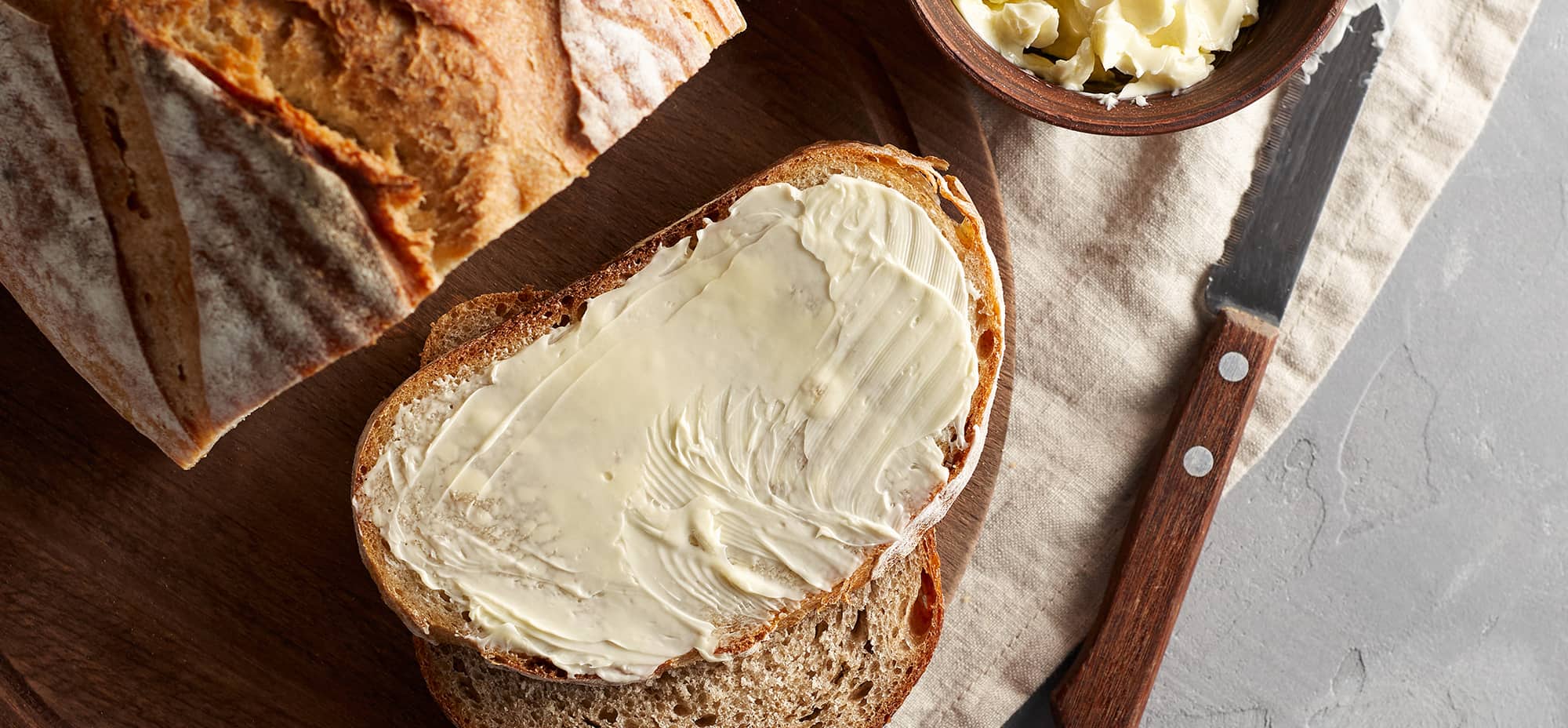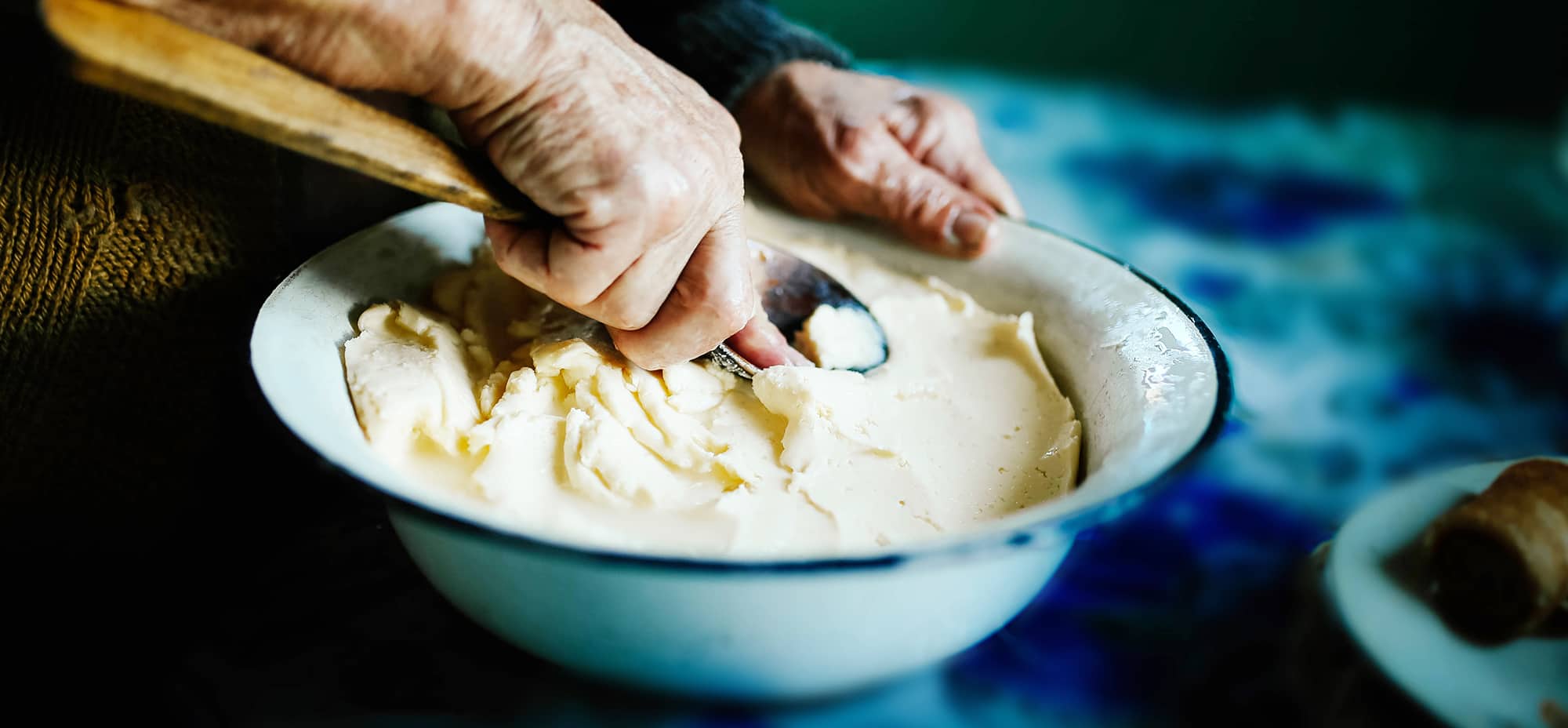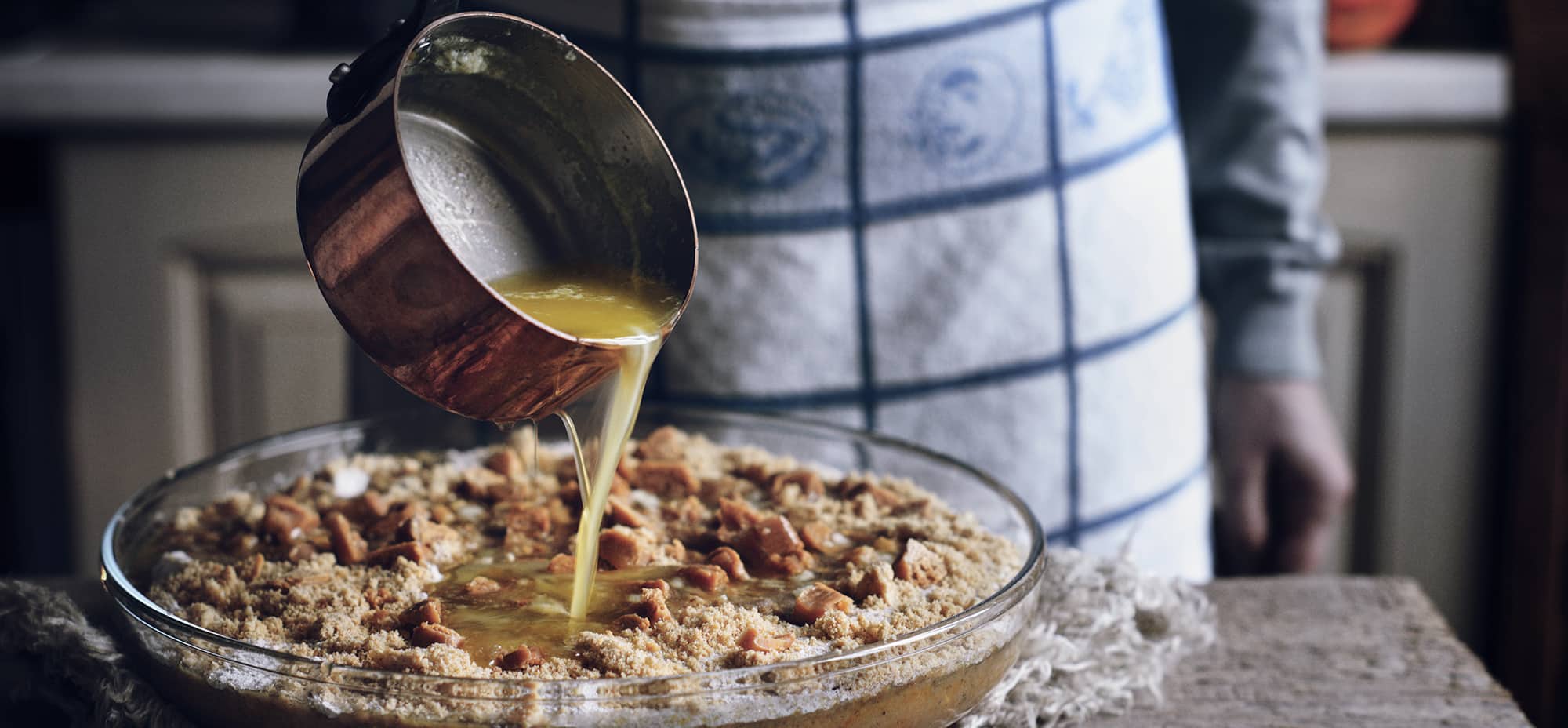Butter and margarine have been around for years and for the majority of their lifespan, they’ve been the centre of the slippery debate around which is the better option for kitchens. Despite being a staple that can be used across menus in a number of ways, the confusion between the two products remains.
Some of the more tangible differences are quite obvious; one is harder than the other and they have different tastes and textures. It is when we dig deeper beyond what is apparent to the eye and taste buds that the debate is less clear. Which option is the healthiest and do they really deliver different tastes and textures when utilised as part of the cooking process?

Firstly - what is butter?
Butter is a dairy product that is produced from the churning of cream or milk. Historians have found references to the consumption of butter over 4,000 years ago and believe its usage can be tied back even further, to when we first domesticated animals.
Butter is typically pale yellow in colour but can also be white to deep yellow, depending on the animal’s diet at the time of production. While it is referred to as the most natural dairy fat available to chefs, butter contains a high percentage of saturated fats, which have been linked to rising bad cholesterol. Despite it being produced naturally, Harvard Health explained the product has come “under scrutiny in recent times due to its high level of saturated fat, which has also been associated with increased heart disease risk”.
Butter offloads a rich flavour, creamy texture and volume when used within cooking baked goods and desserts due to its high percentage of fat. The everyday product is a preferred choice for chefs, due to its high smoke point of 350 degrees Celsius; meaning it is suitable for most heating tasks within the kitchen.
Compared to butter, what is margarine?
Margarine was created in the 1800s as a cheaper alternative to butter. While margarine was originally made from animal fat, in more recent years, the product has been transformed into a dairy-free option with these dairy-based ingredients being replaced by vegetable oil, water, salt and emulsifiers.
Usually used as a spread within the kitchen, margarine has a high trans fats percentage, which is known for rising bad cholesterol and lowering good cholesterol. Compared to butter, margarine has a large amount of saturated fat and water content, which is why it is softer than its butter equivalent when refrigerated. This softer texture allows the spread to be immediately used when taken out of the fridge.
Over time, margarine has evolved and improved to keep up with trends and customer demands. Now as more customers become health aware, businesses are producing a variety of different margarine that are suited to dietary requirements or preferences, whether it is fat free, salt free, dairy free – just to name a few.

Health claims surrounding butter and margarine
It’s been the ongoing discussions for years, whether butter is healthier compared to margarine. Recent reports have now quashed the theories and myths, claiming there is no true stand-out healthy option when it comes to the two spreads. This outcome may seem infuriatingly diplomatic – a neutrals response that’s the equivalent of “sitting on the fence." Though a closer look reveals, one is arguably better than the other…
Butter is perceived to be more ‘natural’ compared to margarine due to its biological dairy component and ingredients. However, according to The Heart Foundation “margarine is the better choice” out of the two. According to the health website, margarine is classed as a healthier option compared to butter based on its fat quantity. “On average, butter contains 50 percent saturated fat and four percent trans fats, while margarine only contains 14 percent saturated fat and 0.25 percent trans fat,” they explained.
While margarine is the better choice in regards to fat quantity, there are in fact healthier options available to customers who may be more aware of their spread intake. These healthier, and more natural solutions include avocadoes, almond butter, olive oil or flaxseed oil spreads. These options are considered a healthier alternative to the main two spreads, as each of them are filled with very minimal bad fats. “Compared to butter, these foods provide unsaturated fats, minimally saturated fats and no trans-fat, and are all linked to having a healthier heart,” the Heart Foundation reports.
Most importantly, what are the roles of butter and margarine in the kitchen
They are both commonly used as a spread that oozes satisfaction as it melts into crispy bread fresh from the toaster. But butter and margarine hold their own important tasks within the kitchen and mixing those tasks up, may turn a dish into a disaster.
Butter is known as being the secret ingredient behind every great tasting bakery item, so switching between margarine may leave your customers running away instead of coming back for more. For cakes, cookies and pastries, butter provides a richer flavour compared to margarine. The high fat quantity in butter provides baked goods with great texture and depth. Whereas, margarine impacts their overall quality, making them thin and flat due to the product containing less fat and more water.
When used in pastry, butter provides a less flaky appearance and a more flavoursome, creamy texture compared to other fats available. For cakes particularly, the high fat content within butter allows the sponge to remain moist and tender for a longer period of time compared to margarine.
Apart from baking, butter is also seen as the better choice when it comes to frying as it is more resistant to being broken down with heat. When it comes to using margarine, the opportunities are more restricted due to its high water content and low smoke point.
Commonly used as a spread for flavour on toast, pancakes and waffles; margarine can also be utilised as a seasoning for fresh fish and sautéing vegetables. Though, if you are using margarine on direct heat, remember to keep it low and monitor it closely to reduce the risk of burning.
